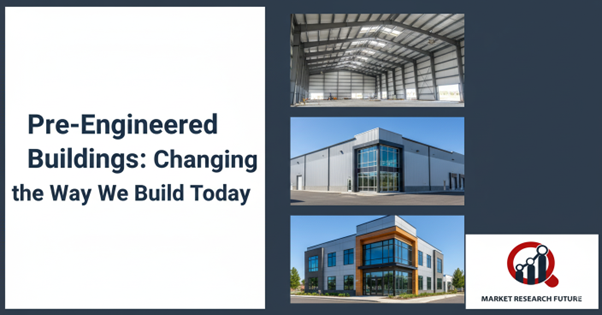How are PEBs beneficial over conventional structures?

An Overview of the Pre-Engineered Buildings Market
Pre-engineered buildings (PEBs) are changing the construction industry by providing better, cheaper, and more flexible options than traditional buildings. PEBs are made with pre-fabricated parts and bolted connections, and they are meant to meet both structural and aesthetic needs. Their steel frames, metal roofs, and wall panels make them strong, long-lasting, and flexible, which makes them great for a lot of different uses.
What Makes PEBs Special
Unlike regular buildings, PEBs cut down on the time and resources needed to build them. Components are made off-site and put together quickly, which speeds up the completion of the project. This efficiency not only lowers the total cost, but it also means that the building will need less maintenance over its lifetime. Because the parts are all the same size, it's easier to add to or change a PEB. This makes it easier for businesses that are growing to use.
Pushing Demand across All Sectors
The demand for warehouses, businesses, schools, gyms, clinics, and recreational centers is going up because cities are growing and industries are growing quickly. More and more industries, such as automotive, aviation, defense, and logistics, are using PEBs because they are better for both structure and operation. The market is getting stronger because more and more people want eco-friendly and sustainable designs, especially in developing areas of Asia and Africa.
Important People in the Market
The competitive landscape is being shaped by big companies like Jindal Buildsys, Lloyd Insulations, Interarch Building Products Pvt. Ltd., and Tiger Steel Engineering Pvt. Ltd. In this fast-growing field, things like product quality, cost-effectiveness, innovation, customer service, and on-time delivery are very important.
Benefits of Pre-Engineered Buildings
- Building that saves time and money
- Little need for upkeep
- Standard parts make the build time shorter.
- Simple changes and additions to the structure
- Designs that are good for the environment and last long
Final Thoughts
Pre-engineered buildings are changing the way we build things, from warehouses to commercial and industrial spaces. Because they are faster, more flexible, and cheaper than traditional structures, they are becoming the preferred choice for modern infrastructure around the world in 2025 and beyond.

Leave a Comment